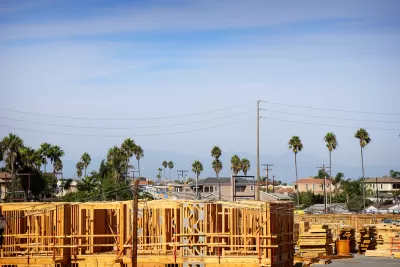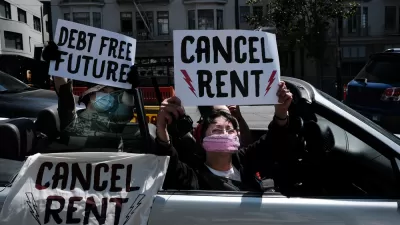A new study highlights how many — or how few — Californians can afford to live in each of the state’s counties.

A new study from the University of California, Berkeley’s Terner Center for Housing Innovation attempts to change the conversation about housing affordability.
As Erin Baldassari explains in an article for KQED, the study “argues the classic question — ‘Is a place affordable?’ — should instead be supplanted with a new one: ‘Who can afford this place?’” The subtle difference between those two questions can illuminate stark disparities. For example, “we’ve been saying Beverly Hills is perfectly affordable because the people who live there can afford it.”
To shift to a new definition of affordability, researchers used data about housing costs, income, and other expenses to assess affordability by county for all Californians. “The result is an interactive map that shows how many Californians could afford to live in each county — which paints a much bleaker picture of the state’s most expensive areas than had previously been shown.” The study also accounts for things like access to transportation, which can lower the cost of living in urban areas, somewhat balancing out more expensive rents.
The study’s findings could lead to changes in how policymakers define affordability to better account for overall costs — but changes to housing assistance programs would likely require major injections of new funding.
FULL STORY: California Housing Is Even Less Affordable Than You Think, UC Berkeley Study Says

Alabama: Trump Terminates Settlements for Black Communities Harmed By Raw Sewage
Trump deemed the landmark civil rights agreement “illegal DEI and environmental justice policy.”

Study: Maui’s Plan to Convert Vacation Rentals to Long-Term Housing Could Cause Nearly $1 Billion Economic Loss
The plan would reduce visitor accommodation by 25% resulting in 1,900 jobs lost.

Why Should We Subsidize Public Transportation?
Many public transit agencies face financial stress due to rising costs, declining fare revenue, and declining subsidies. Transit advocates must provide a strong business case for increasing public transit funding.

Paris Bike Boom Leads to Steep Drop in Air Pollution
The French city’s air quality has improved dramatically in the past 20 years, coinciding with a growth in cycling.

Why Housing Costs More to Build in California Than in Texas
Hard costs like labor and materials combined with ‘soft’ costs such as permitting make building in the San Francisco Bay Area almost three times as costly as in Texas cities.

San Diego County Sees a Rise in Urban Coyotes
San Diego County experiences a rise in urban coyotes, as sightings become prevalent throughout its urban neighbourhoods and surrounding areas.
Urban Design for Planners 1: Software Tools
This six-course series explores essential urban design concepts using open source software and equips planners with the tools they need to participate fully in the urban design process.
Planning for Universal Design
Learn the tools for implementing Universal Design in planning regulations.
Smith Gee Studio
Alamo Area Metropolitan Planning Organization
City of Santa Clarita
Institute for Housing and Urban Development Studies (IHS)
City of Grandview
Harvard GSD Executive Education
Toledo-Lucas County Plan Commissions
Salt Lake City
NYU Wagner Graduate School of Public Service





























